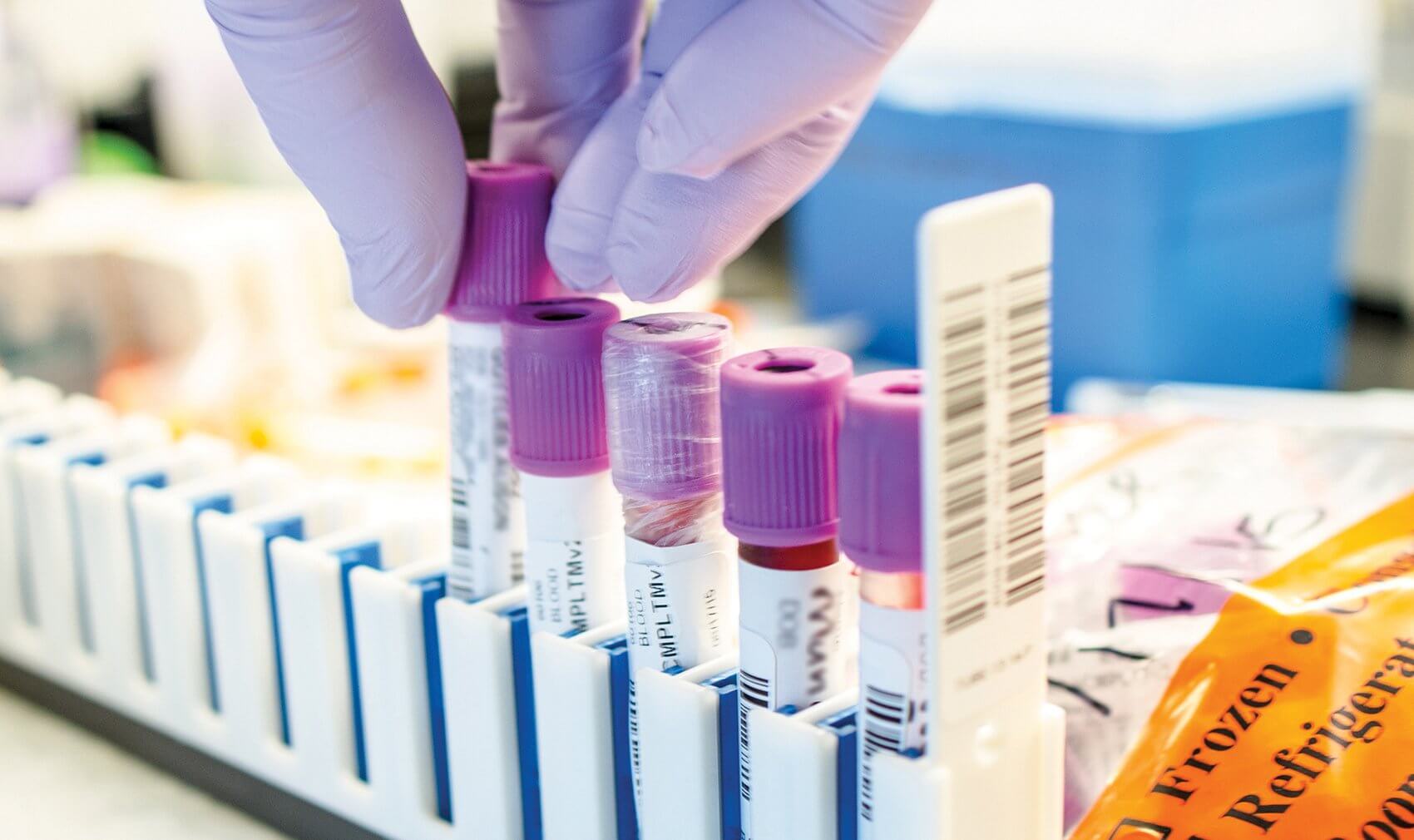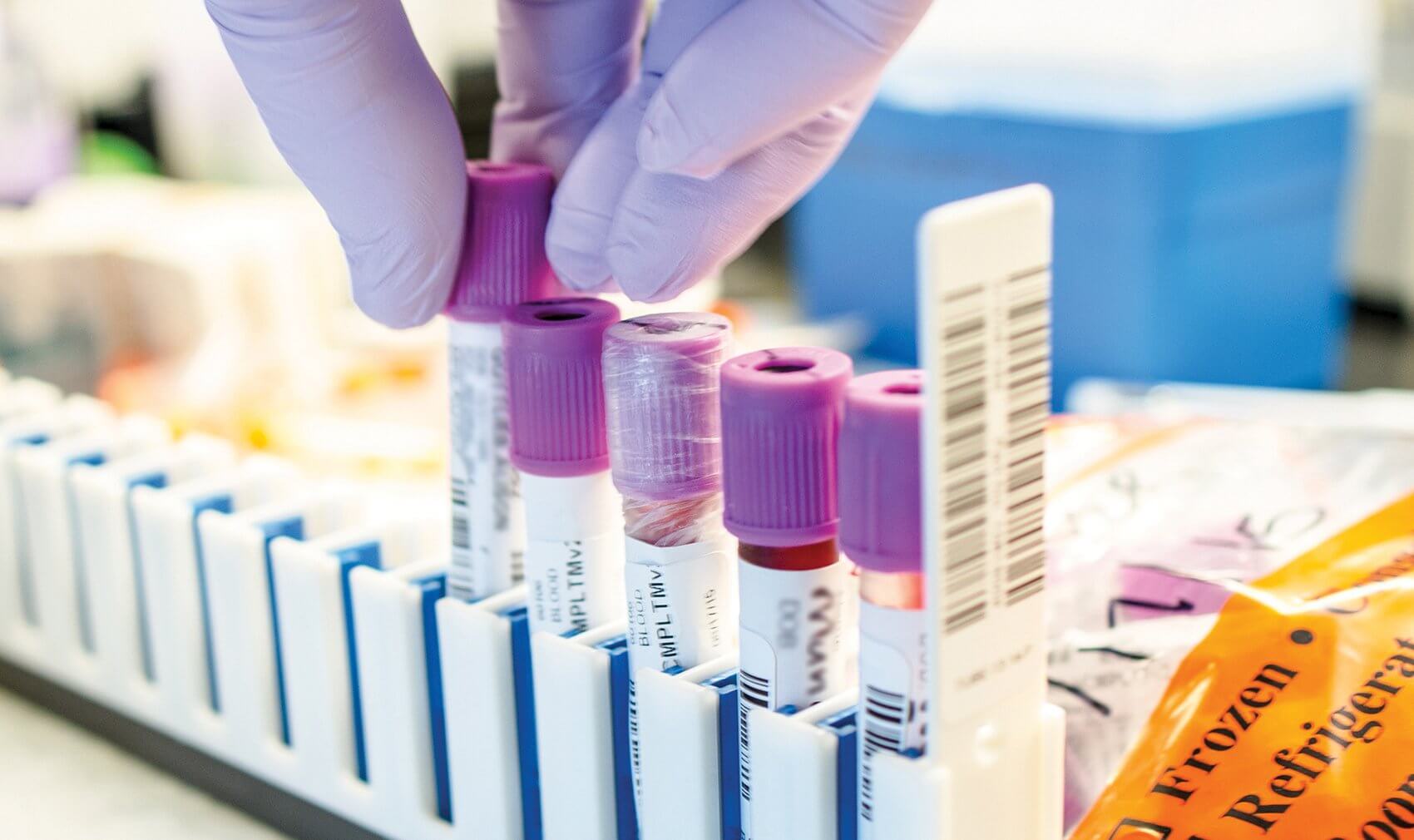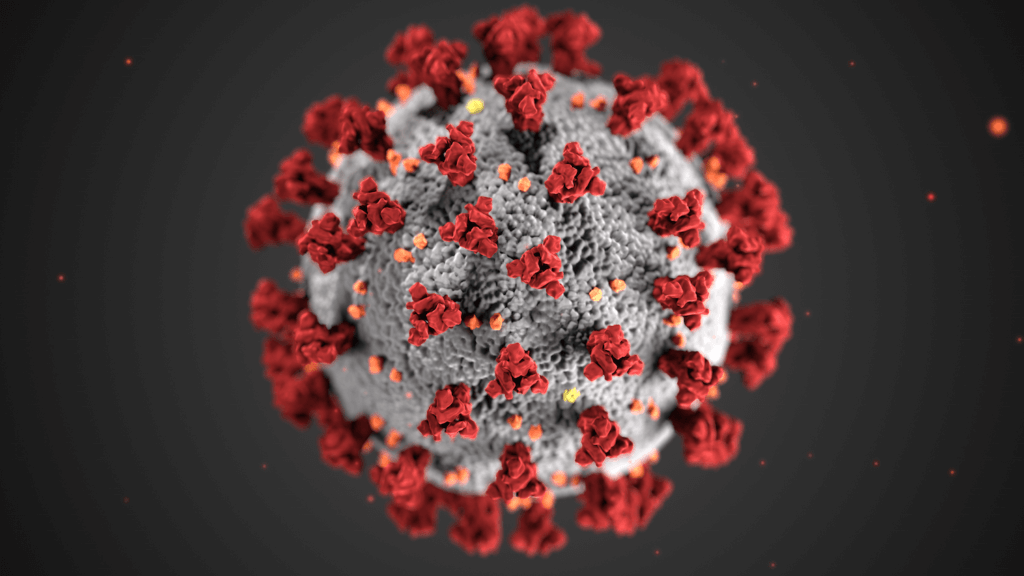The Genomics Revolution

First, there was Mendel and his peas. In the century-and-a-half that followed, matched pairs of chromosomes were identified, As and Ts and Gs and Cs were coupled off, X-ray crystallography techniques exposed the double helix structure of DNA, and the code of life was cracked wide open.
It was, of course, the Human Genome Project—the international, multi-billion dollar endeavor in which thousands of researchers spent over a decade identifying and mapping the complete set of nucleic acid sequences encoded within the DNA of humans—that ultimately catalyzed all of these scientific breakthroughs into something that could be translated into the world of health care. Today, just 12 years after its completion, some of the great minds of genomics research are bringing that science into clinics throughout the Texas Medical Center.
“Back in the 1980s, we knew that there were genetic causes for important human conditions, and we recognized the potential for understanding genetics and genes to really revolutionize the way we tackled therapy and diagnostics and prognostics, but we
didn’t have the genome, and the technology to get it wasn’t there yet,” explained Richard Gibbs, Ph.D., director of the Human Genome Sequencing Center at Baylor College of Medicine. “Nevertheless, the visionary quest was launched to sequence the human genome so that we would have this foundation to do all of it—whatever ‘it’ turned out to be. It was a big breakthrough upon completion, and the question immediately became, ‘How do we push the genome into medicine?’ because impacting health is really what it’s all about.”
The first genome cost around $3 billion, but by 2009, advances had reduced the cost of mapping an individual’s genome to less than $50,000. Researchers then turned to straightforward problems—diagnoses that, based on family history or other hereditary indicators, pointed towards a single genetic cause. Pediatric diseases quickly emerged as one of the most promising fields for genetic application because many of the disorders are inherited and triggered by the mutation of a single gene. The idea was to map the genome of the patient, and often his or her parents as well, to pinpoint what specific gene was missing or modified and how its expression was inherited.
“Baylor already had such a strong history of studying single-gene diseases, and we were determined to move this forward, so we worked on refining the tests,” said Gibbs. “We were able to simplify the analyses and developed some clever techniques in the lab that pulled out the genes, which are only one percent of DNA anyway, with special hybridization tools.”
Known as whole exome sequencing, the abbreviated assay dropped the price to $2,000 per genome. Now, Baylor routinely evaluates children with uninterpreted disorders, often providing answers where before, there were none. For individuals like Kristin Phillips, this kind of information is invaluable.
Kristin’s son, Jacob, was born in May 2009, seemingly healthy as could be. For the first year of his life, he was a cheerful and active baby, reaching all of his developmental milestones effortlessly until he came down with a common virus at 13 months old, during which time he spiked a 105-degree fever and suffered a small seizure.
“After Jacob got sick, he wasn’t the same,” said Phillips. “He was suddenly very colicky and fussy, and his motor skills began deteriorating drastically—within two months, he was falling over on his face and could not longer bear weight on his legs.”
Phillips and her husband rushed their son to Texas Children’s Hospital, where they ran exhaustive state-of-the-art testing: CTs, MRIs, lumbar punctures and repeated lab workups that perpetually came back negative. For over three years they tried to identify the cause of his developmental regression, while Jacob’s condition worsened. Despite brief misdiagnoses, visits with specialists from coast to coast and multiple lifestyle changes, nobody could explain what had happened. Then, in 2013, a genetic counselor at Baylor called to tell Phillips about the breakthroughs in whole exome sequencing. Jacob, she said, was a perfect candidate.
By August of that year, the Phillips family finally had a clear diagnosis: Jacob was suffering from an extremely rare genetic disorder called infantile neuroaxonal dystrophy, a neurodegenerative disease caused by a mutation in the PLA2G6 gene. Through impaired function of necessary enzymes, the mutation causes progressive neurodegeneration, explaining Jacob’s lapsed motor skills and reduced mobility. The condition is so rare that in 2013, Jacob was only the 10th child in the U.S. to have been diagnosed with the disease. His case is also unique—as a rule, both parents must be carriers for the mutation to be passed on to the child, but in Jacob’s case, only his mother tested positive for the recessive mutation. Geneticists believe the gene somehow mutated independently or was double-copied from her chromosome. Unfortunately, there is no known cure for the disorder, which, like other neurodegenerative diseases such as Parkinson’s or Alzheimer’s, continues to advance as time passes.
Jacob is now six years old and in hospice care—he is 95 percent blind, nonverbal and has lost all motor skills. Still, his parents remain hopeful. Since his diagnosis in 2013, they have raised enough funds to fully support two different research projects for the disease, one of which is exclusively focused on gene therapy, a promising new technique that harnesses genes to treat genetic disorders. While there is no guarantee that either will produce a treatment or cure, the value of the diagnosis itself cannot be underestimated.
“Before the diagnosis, we thought it was everything under the sun,” said Phillips. “For so long we believed his condition had been directly caused by the virus, and although we suspect that may have been an environmental trigger for the disorder, at least now we know what we’re working with. We know what to expect and how to manage his pain, and we’re able to move forward as far as the research goes. Without the diagnosis, there would have been no hope, no chance for his survival. At least now, through our research, there’s that possibility.”
“If you are a parent or a family in that situation, the impact of a diagnosis is huge,” said Gibbs. “When you are able to resolve this down to a genetic cause, you provide prediction, you provide a peer group, and you accentuate the pathway to therapeutics, which is the most active area of research right now. You can’t underestimate the value of diagnostics and prognostics. We’ve got to understand all the basic nuts and bolts before we can fix what’s broken.”
Nowhere is the value of collecting and understanding data—the basics of how the genes actually function—potentially more significant than in the field of cancer research. At its core, genetic diagnostics winnows down to basic discovery and understanding. A child who has a single gene defect indicates the function of that gene—if there is a mutation in the gene, the protein the gene codes for is altered or missing, and those effects tell scientists what the protein normally does. That’s genomics 101, and in cancer cells the same comparison can be made between cancer tissue and non-cancerous normal tissue.
By contrasting an individual’s cancer cells with one of his or her normal cells, the changes that resulted in the malignancy become apparent. The simplicity of it is as elegant as the biology itself, but, as with most science, it also has the potential to be misleading—especially when you move towards developing therapeutics to confront the mutations.
Designing cancer treatments based on genomic evaluations is exceedingly difficult for many reasons, perhaps most of all the inherent heterogeneity of the disease, which in the simplest terms describes the complexity of the composition of cancerous tissue.
“There is a lot of intricacy in cancer cells and the process of malignancy,” explained Andrew Futreal, Ph.D., Chair Ad Interim in
the department of genomic medicine at The University of Texas MD Anderson Cancer Center. Notably, MD Anderson was recently named one of two new Genome Characterization Centers funded through the National Cancer Institute. “The biggest challenge in finding clinically useful information via genomic data is comprehending heterogeneity. Not only are tumors heterogeneous from one patient to another, but there is also intra-tumor heterogeneity, wherein the same tumor accumulates different kinds of mutations over time.”
Futreal, who is known in the world of cancer research for identifying the BRCA1 and BRCA2 breast/ovarian cancer susceptibility genes, is working to mine the research by integrating datasets from patient populations and then running analyses across time to identify genomic determinants of different variables, including response, resistance, toxicity and survival. Working closely with MD Anderson’s Molecular Diagnostics Laboratory and the Institute for Personalized Cancer Therapy, the hope is to move his findings into the clinic to advance general therapeutics and precision oncology therapies, an approach that emphasizes the uniqueness of an individual’s disease based on his or her genome and is considered by many to be the holy grail of clinical genomics.
The key is acquiring plenty of data, which, surprisingly, may not be the easy part of the equation.
“Clinical records are famously difficult to get into research databases. Some of this is for good reason, because people don’t want
their health records shared indiscriminately,” said Gibbs. “But even if you have a situation where everyone is on board for sharing, we still run into challenges because there is so much variation in the way clinical data is collected and measured. Everyone wants to see clinical records become more harmonized and standardized, but of course the priority is physician care,
so a scientist’s version of how data should be aggregated isn’t going to come before that.”
Nevertheless, the move toward collecting and analyzing troves of genetic data for patient care purposes is becoming more and more prevalent in programs throughout the Texas Medical Center. At Texas Children’s Hospital, a research study called BASIC3 (Baylor Advancing Sequencing in Childhood Cancer Care) is investigating the utility of tumor and germline (familial) whole exome sequencing for children with newly diagnosed solid tumors. As the only pediatric cancer project funded by the National Human Genome Research Institute’s Clinical Sequencing Exploratory Research program, the study is unique in that it is not only examining the results of the clinical testing, but also analyzing the process of gathering and disseminating genomic data to patients and their primary oncologists.
“One of our primary goals for the study was to set up the logistics and infrastructure to perform clinical sequencing—to take it from a research tool to something that we can actually do for our patients,” said Will Parsons, M.D., co-director of the Cancer Genetics and Genomics Program at Texas Children’s Cancer and Hematology Centers and co-principal investigator of the BASIC3 study. “This includes everything from how we’re going to obtain informed consent from families and explain the risks and benefits of genomic testing, to how to explain the test results to oncologists, patients and families, to how to write genomic test reports—all the practical steps, from start to finish, of performing sequencing as a clinical test.”
In addition to also looking at the utility of these tests in the clinical setting and how the information can be applied to both diagnostics and therapeutics for patients and their families, the study has engaged a team of ethicists and social scientists to work with the oncologists, parents and patients to evaluate their experience and preferences for the testing process.
“Both the oncologists and families are providing feedback regarding important issues related to genomic testing, such as how we’re explaining the results to them, what kind of things they want to learn and whether or not they are bothered by any of the other types of results one can get when doing this scale of testing,” said Parsons. “Both groups are longitudinally surveyed and interviewed so that we can gain a better understanding of how we can best interact with our patients and their families and provide the most useful information possible.”
Ultimately, studies like these allow institutions to begin initiating prospective clinical trials using these genomic tests, a necessary next step towards evaluating the impact of personalized medicine approaches and developing therapeutics.
Unlike single-gene pediatric disorders and cancer, however, the argument for genetic testing for adult familial diseases (think cardiovascular, neurodegenerative or metabolic) has yet to catch on in the clinical world. The fact that these diseases run in families indicates that there is a clear genetic component, but because the majority of these conditions are caused by something more complex than a single-gene mutation, the challenge is determining all the genetic risk factors and other causative elements that contribute to these “traits,” or put more appropriately, predispositions for developing the conditions.
“We’re kind of at a threshold moment right now,” said Gibbs. “If you look at the value of a genomic test for a particular class of adult disorders at this time, one could argue that its value and immediate clinical impact is minimal. But, if you sequence the whole person and the whole family and you add up the value you’d get for examining any potential adult conditions, plus the value you’d get for prediction of any possible childhood problems, then in aggregate you could easily justify the test.”
The problem, explained Gibbs, is that the structure of medical care is currently centered on acute treatment rather than evaluation of whole family health as a predictor for disease. Nevertheless, he believes the universal benefit of genetic data will become apparent soon enough.
“Through this data, we’re understanding targets better, we’re understanding genetic processes, genetic chemistry and the biology better, and we’re understanding what to look for and what to test for when you screen drug compounds,” said Gibbs. “We have this global mission and vision that ultimately, every person who has any health issue should have a genome sequence as part of their work-up, just as they would have an X-ray or metabolite test.”
As with any goal of such mammoth proportions, it will take teamwork to get there. To help facilitate the collaboration required, member institutions of the Texas Medical Center, including Baylor, are coming together to set up a TMC Genomics Institute with the objective of being the world’s most innovative genomics center for discovery and disease intervention.
“We really want to see more integration of different programs in the medical center in general, and genomics is the perfect vehicle for it,” said Gibbs. “That’s the reality. In the past, we’ve centralized the genomics activity and it’s been very expensive and has been mainly discovery-based, so it hasn’t lent itself for such integration. But as we move towards these clinical arenas, there’s more opportunity for collaboration and to synergize our expertise, whether it’s in the lab or the clinic.”
The possibilities for clinical genomics to transform the world in which we live are as vast as the potential combinations of base pairs in human DNA. And although the focus now is on treating cancer, creating therapies for incurable diseases, developing lifesaving drugs to combat deadly viruses, and helping families understand hereditary risks of reproduction, no one can really predict how it will all come together.
“We are all inclined to be conservative in our future projections and we invariably just make fairly modest, linear projections,” said Gibbs. “When the computer was first introduced, most people just thought about the ability to type more documents, not all of the other really innovative developments like Internet commerce and video gaming, or the fact that we now carry all of this around in our pockets. It’s the same with genetics—we don’t know where it will take us, but we have every reason to be extremely optimistic about it.”
Baylor Miraca Genetics Laboratories
In the fall of 2014, Baylor College of Medicine and Miraca Holdings, Inc., a Japan-based international health care company focused on clinical diagnostics and laboratory tests, announced a joint venture in which the two institutions would share ownership and governance of their clinical genetics diagnostic laboratories. The Texas Medical Center-based venture, named Baylor Miraca Genetics Laboratories, allowed Baylor to continue to independently drive its genetic diagnostic research agenda while expanding their laboratory diagnostic skills into a larger commercial enterprise. Hoping to play a major role in Houston’s budding biotech industry, the marriage of Baylor’s academic expertise and Miraca’s international business acumen has already proven successful: in May, the organizations announced the launch of an enhanced clinical exome sequencing test, providing physicians the option to speed up the delivery of final results to two-to-three weeks from three months. Baylor College of Medicine pioneered the research and development of the original whole exome sequencing test, initially launching it for clinical use in 2011.









